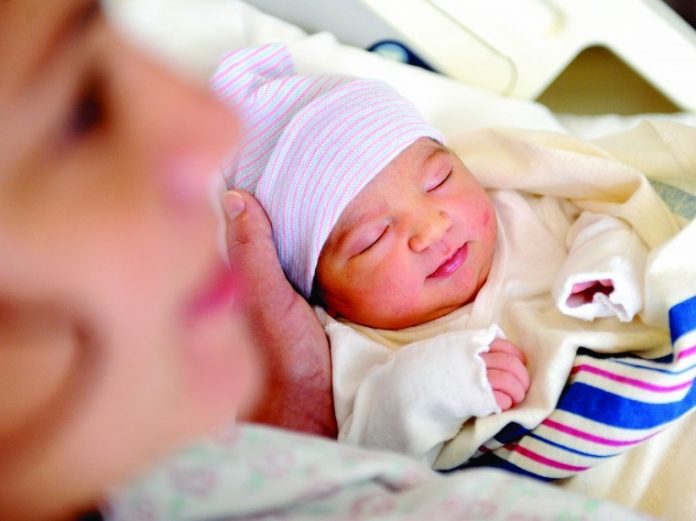Recently updated recommendations from the National Institutes of Health reiterate that babies should be placed on their backs to sleep for bedtime and naps, with an updated suggestion that blankets not be used in sleep areas with babies.
The recommendations are part of the “Safe Sleep for Your Baby” campaign originally launched as the “Back to Sleep” campaign 10 years ago. The guidelines are revised every few years with input from the American Academy of Pediatrics.
Catherine Farnham, a public health nurse III and perinatal services coordinator for San Benito County, is spreading the word on the new recommendations in San Benito County. She spoke at the San Benito County supervisors meeting Oct. 16, when she received a proclamation declaring October as “Safe Sleep for Babies” month.
“The American Academy of Pediatricians looked at what is safe,” Farnham said, of the recent update. “They said no crib bumpers and no blankets. A safe sleep environment is nothing in the crib except the baby.”
Farnham said if families want to have toys near the crib, they can tie them to the outside of the crib where the baby can see them but they can’t block the baby’s face.
The recommendations are meant to decrease the rate of sudden infant death syndrome, an occurrence in which an infant up to 1 year of age dies with no apparent cause. SIDS is most common in babies from two months to four months of age, and about half the cases occur when a baby is in childcare. Farnham recommended families make sure that everyone watching the baby – grandparents, extended family or caregivers – know to place the baby on its back. She has some door hangers that she gives out to families that have a picture of a baby being put to sleep on its back and the 10 recommendations on the reverse side of the card.
“It’s devastating when it happens,” Farnham said. “We did have one a few months ago.”
She said San Benito County has about one SIDS case every other year and is on par with the national average. The California Health Departments SIDS website does not include a SIDS rate for San Benito County on its most recent report from 2008-2010 because the population is too small. The county had one SIDS death out of 2,303 births between 2008-10.
The rate of SIDS cases has fallen by 50 percent in the United States since 1994, when the “Back to Sleep” campaign was first launched.
When a case occurs, Farnham meets with the families and shares resources that are available in the community, such as two general grief support meetings held once a month in Hollister and a Los Gatos group called HAND (Helping After Neonatal Death.) She also provides information on some online support resources that are available.
While Farnham said she responds to all fetal and infant deaths, she said the department’s budget only allows her to make home visits to deaths that are classified as SIDS. In San Benito County, she said 22 babies under the age of 1 died since 2009. She said half were due to complications of being premature and the other half were due to birth defects. Only one in the last two years was due to SIDS.
She said local hospitals are required by law to give information to parents about safe sleep arrangements so she meets with hospital staff and local doctors when requirements change. She also keeps public safety officers, such as police officers and sheriffs deputies, the coroner, fire and emergency services informed about SIDS.
Farnham said some breastfeeding mothers prefer to have the baby in their bed because they think it is easier for nighttime feedings. But Farnham said there are benefits for both mom and baby if the baby is in its own sleep space.
“For parents they sleep well,” she said. “They are less worried about rolling over or pulling covers over the baby.”
Safe Sleep for Your Baby
1.) Always place your baby on his or her back to sleep, for naps and at night.
2.) Place your baby on a firm sleep surface, such as on a safety-approved crib mattress, covered by a fitted sheet.
3.) Keep soft objects, toys and loose bedding out of your baby’s sleep area.
4.) Do not allow smoking around your baby.
5.) Keep your baby’s sleep area close to, but separate from, where you and others sleep.
6.) Think about using a clean, dry pacifier when placing the infant down to sleep.
7.) Do not let your baby overheat during sleep – dress in light sleep clothing.
8.) Avoid products that claim to reduce the risk of SIDS.
9.) Do not use home monitors to reduce the risk of SIDS
10.) Reduce the chance that flat spots will develop on your baby’s head by providing tummy time when the baby is awake and being supervised.
For more in-depth recommendations, visit www.nichd.nih.gov/sids or call Farnham at 637-5367.










